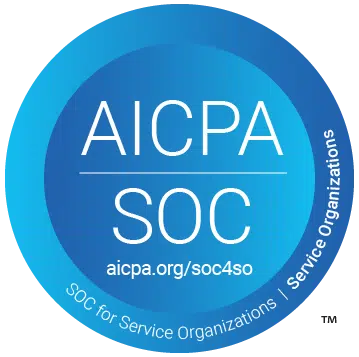
Public procurement, despite being one of the most crucial processes for delivering value to citizens, has often been criticized for being opaque, inefficient, and slow to adapt to changing needs.
Today, as governments face increasing pressure to do more with less, modernizing public procurement has become a top priority. By embracing transparent, citizen-focused strategies, public sector organizations can not only achieve better outcomes but also build greater trust with the communities they serve.
Modernizing Public Procurement Through Innovation
Procurement represents nearly 15% of global GDP and an even higher share of government spending. The way these funds are allocated can either support a fair, competitive marketplace or perpetuate inefficiencies and inequalities.
Traditional procurement systems are often siloed, paper-heavy, and rule-focused rather than outcomes-driven. This creates barriers for smaller vendors, slows down service delivery, and obscures the public's ability to see how their tax dollars are spent.
In contrast, modern procurement aligns purchasing power with broader public goals such as sustainability, innovation, inclusion, and fiscal responsibility. Done right, procurement becomes a lever for economic development and improved public trust.
Citizen-Focused Approach to Public Procurement
While innovation is key for transforming any outdated processes, in the case of public procurement specifically, innovation is not just limited to the use of emerging technologies and automating workflows. It incorporates transparency, accessibility, and citizen-focused decision-making.
As demonstrated by initiatives like those at Supply Ontario, a government agency leading procurement reform in Canada, this transformation is not only possible but well underway.
Rather than letting hundreds of individual departments and agencies operate independently, Supply Ontario works to coordinate and streamline procurement across the provincial public sector.
This centralization reduces duplication, lowers costs through volume purchasing, and builds a consistent vendor experience. More importantly, it increases transparency — something both vendors and citizens demand in today's public sector.
Transparency isn't just about publishing tenders online. It means:
- Clarity around procurement goals and evaluation criteria.
- Open access to opportunities for all vendors, including SMEs and diverse suppliers.
- Public visibility into decision-making, contract awards, and supplier performance.
With these principles embedded in the procurement process, trust grows — among suppliers, stakeholders, and citizens alike.
Leveraging Partnerships for Greater Impact
Modern procurement is not a solo endeavor. It requires partnerships across government, with suppliers, and within the broader community. By working together, public sector organizations can pool resources, share best practices, and drive innovation at scale.
Key elements of partnership-driven procurement include:
- Cross-sector collaboration: Engaging with industry, academia, and non-profits to co-create solutions.
- Supplier development: Supporting suppliers, especially small and diverse businesses, to participate in public procurement.
- Knowledge sharing: Building networks and communities of practice to share lessons learned and drive continuous improvement.
Building a Citizen-Focused, Modernized Public Procurement Strategy
While cost and compliance are foundational in procurement, the modern approach prioritizes citizen value above all else. This mindset shift leads to several strategic principles:
1. Outcome-Oriented Thinking
Procurement should focus on results, not just rules. Instead of specifying what to buy in granular detail, governments are beginning to define what problem needs to be solved. This opens the door to innovative solutions, especially from startups and non-traditional vendors, and allows contracts to be evaluated based on impact, not just lowest price.
2. Inclusive and Diverse Supply Chains
Governments are recognizing that a citizen-focused procurement strategy must reflect the diversity of the communities they serve.
This includes simplifying registration processes, unbundling large contracts into smaller ones, and offering mentorship or partnership programs to help underrepresented vendors compete. A more diverse supplier base means a stronger, more resilient economy, one that reflects the full spectrum of public needs.
3. User-Centered Procurement Processes
Just as governments have embraced user-centered design in digital services, procurement processes are now being reimagined to be simpler, faster, and more intuitive, for both internal staff and external suppliers.
That means clear instructions, fewer redundant steps, intuitive portals, and real-time support. It also means gathering feedback and iterating over time, treating procurement as a living system, not a static bureaucracy.
Digital Transformation and Data-Driven Decision Making
A critical enabler of modern, transparent, and citizen-focused procurement is digital transformation. By leveraging technology and data, public sector organizations can streamline processes, enhance transparency, and make more informed decisions.
For example, e-procurement systems make it easier to publish opportunities, receive bids, and track contract performance. Meanwhile, data analytics tools allow procurement teams to identify trends, measure outcomes, and optimize spending.
Digital transformation also supports transparency and citizen engagement by making information more accessible and actionable. Dashboards, open data portals, and interactive reports enable citizens to monitor procurement activities and hold government accountable.
Building Capacity and Culture for Change in Public Procurement
Modernizing procurement is not just about new processes and technologies — it also requires a cultural shift. Public sector organizations must invest in building the skills, mindset, and leadership needed to drive continuous improvement.
By embracing transparency, leveraging data, prioritizing outcomes, and designing around users, they can turn procurement into a tool for trust, innovation, and public good.





